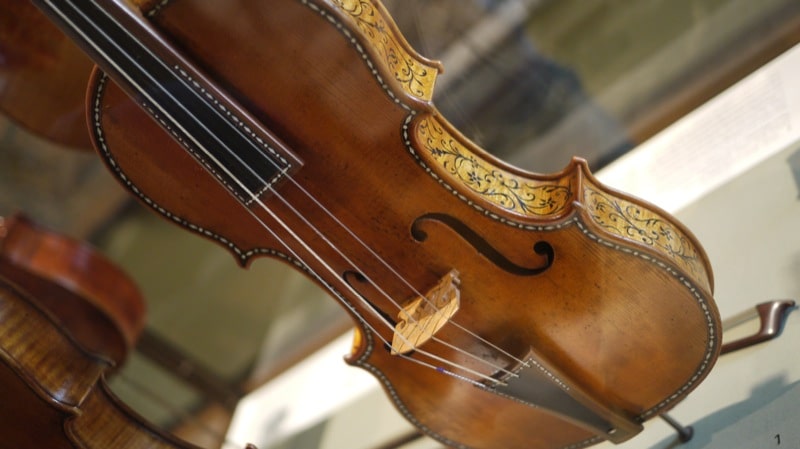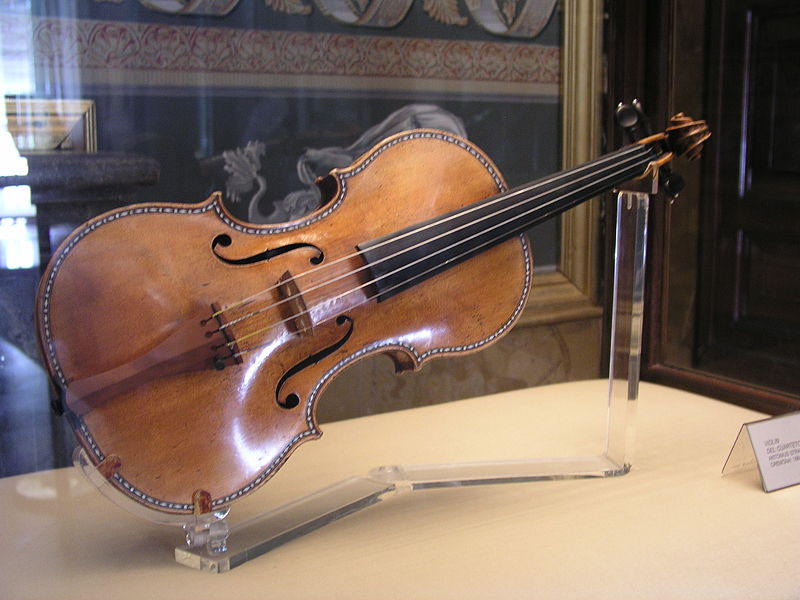
In a recent article, I gave a broad account of the evolution of the violin with a particular focus on the work of the Cremona luthiers. At the head of this revolutionary group of innovators was the Amati family and later, towards the close of the 17th century, Antonio Stradivari (1644-1737).
From here the story of the violin took a pathway that probably couldn’t have been fully imagined then. Who might have dared consider that Antonio Stradivari would take the world by storm creating beautiful violins that command stratospheric prices in today’s market?
The Impact of Stradivarius on Violin Making
Antonio Stradivari was, if nothing else, an extremely hard-working craftsman. Whilst most of his collection of instruments he created were violins—approximately 1000—he also made cellos, harps, mandolins, and guitars. There are currently around 500 Stradivari violins in circulation.
The one instrument heralded as the very best example of his work is in the Ashmolean Museum in Oxford, England, nicknamed The Messiah. This gives you an idea of just how precious these surviving instruments are and how immeasurably important Stradivari is to the world of violin making.
What was it that made Stradivari so important in terms of manufacturing violins?
Some claim that the Stradivari violins that have survived are certainly very fine instruments but that was because he had wood that came from a special place in Italy, was treated or processed using unaccounted-for methods, and finished with a varnish whose ingredients are almost magical.
This mystique and myths that surround Stradivari are plentiful, but few, according to recent scientific research, have any genuine value or truth.
Stradivari we know used young Italian spruce wood to create his violins that would have been naturally seasoned. He also carefully developed the varnish that he used to complete all his instruments.
This would have been unique to Stradivari but, as far as the research can ascertain, contains no magical elixir, although it would have a significant impact on the tonal qualities of the instrument.
What it boils down to is that Stradivari was a master of his art, never failing to refine his skills and never settling for anything less than the best he could create.
Origins and Development
Stradivari may well have begun life as a wood carver, but his precise origins are uncertain. This certainly would have provided the young instrument maker with a feel for wood alongside essential skills to begin creating musical instruments.
Even though there is no direct link between Stradivari and the Amati family, he had probably seen their violins, as his early models contain similarities but certainly not copies of those instruments.
Stradivari’s first violin is dated to 1666. Over the coming twenty years, Stradivari worked tirelessly to perfect his craft and to eventually create instruments that became legendary.
Working from Piazza San Domenico in Cremona, Italy, Stradivari carved out a name for himself through extremely hard work and by courting the patronage and interest of the nobility.
Through this diligent approach to his business, Stradivari survived when other manufacturers struggled. His work was unquestionably exceptional, detailed, and aesthetically thrilling. This would have held great appeal to the monied individuals who were able to support his career.
Golden Period of Stradivari
From 1700 to 1720, Stradivari entered his golden period, where he created some of the most astonishing examples of his work. It was within this period that Stradivari created what many consider to be the pinnacle of his work.
These almost mythical violins are the ‘Lady Tennant’, and including the ‘Baron von der Leyen’, ‘Messiah’, and ‘Lady Blunt’. Several unique characteristics mark these beautiful instruments out from the others.
The arches of the violins are flatter, they are broader, and the back panels are made of flaming maple. These violins also had a distinctive, rich red varnish that made them unmistakable.
Sound Quality and Design Features
Not only did the Stradivari violins have a distinct and stunning appearance, but the sound they produced was like no other. Unlike the forerunner to the violin, the viol, the Stradivari violin had power.
It could project its sound over large ensembles to the back of concert venues without the performer having to make an additional effort to achieve this. Stradivari made this possible whilst making no compromises concerning the sonority and ease of playing.
How did Stradivari achieve these dramatic changes? It cannot be attributed to any single aspect of craftsmanship but is more closely aligned to the culmination of every element of design and creation. Certain features distinguish Stradivari’s work from that of the Amati household.
The C-Bout (at the lower end of the instrument) is noticeably stronger and straighter. Equally, the F-Holes are also longer and straighter than those you’d see on Amati instruments. In addition, the Stradivari violins often have a larger scroll.
As I mentioned previously, the unusual red varnish is frequently attributed to the tonal qualities that are specific to the Stradivari violin. Violin manufacturers broadly agree that a varnish can ruin or make an instrument.
Enduring Legacy of Stradivari
All these disparate elements that, as individual components, might not create a significant difference, when applied in the way that Stradivari did, create unparalleled instruments that have endured the centuries.
Another key factor is that very few violin makers who followed the Master Stradivari could come close to his level of skill, inventiveness, and ingenuity. Stradivari relentlessly pursued an ideal in every instrument he created. He set a stratospheric standard and broke the design mould for violins that to this day is rarely reached.
Stradivari was able, through persistent pursuit of the perfect violin shape, to arrive at the creation of a selection of instruments that were expressive and able to produce a tone that carried beautifully. The resonance of a Stradivari is unique.
Although today we fully acknowledge and recognise the importance of Amati and Guarneri violins, the Stradivarius still tops the wish list for numerous players because of its tonal characteristics and the assurance that it will allow the player to comprehensively realise their performance intentions.
Conclusion on Stradivari’s Impact
Each of his instruments is different. Each has a personality attached to the instrument, and each needs to be understood if you are to harness the violin’s capacity.
They are, especially the instruments that were made during Stradivari’s Golden Period, works of art crafted by a perfectionist of immense skill and perception.
Stradivari single-handedly revolutionised violin creation. Without his considerable contribution, where would the world of the violin be today?


